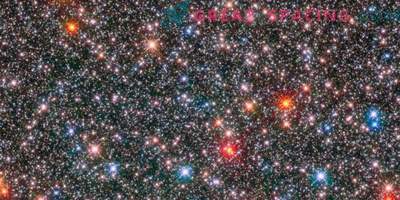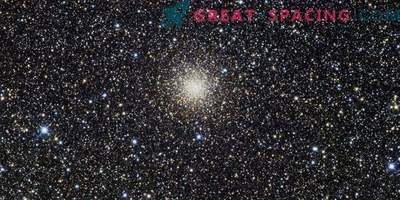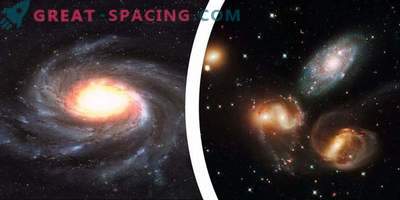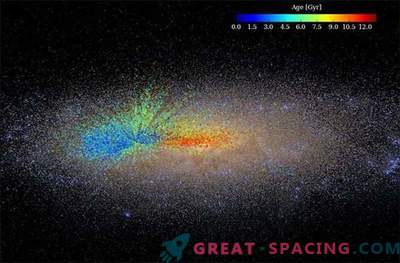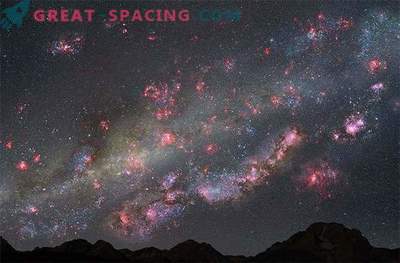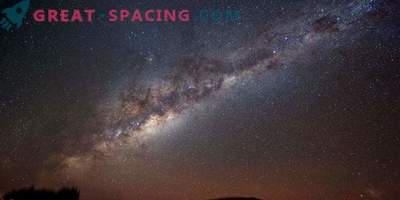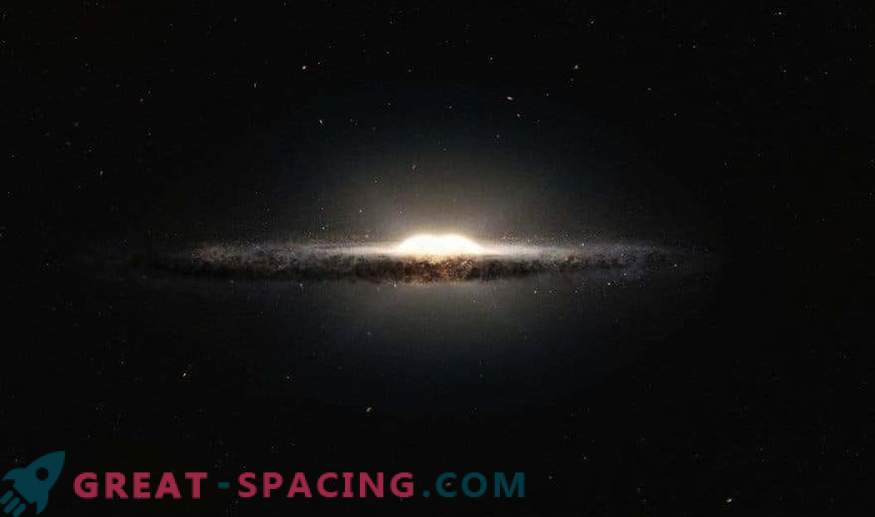
Artistic vision of the peanut structure of a central galactic bulge
The first large-scale age map of the Milky Way shows that the period of stellar birth with a duration of 4 billion years has created a complex structure that underlies our galaxy.
The Milky Way refers to the spiral type with a bulge in the center. The diameter of the bar is thousands of light years, and it holds about 1/4 of the total stellar mass. Early studies showed that the bulge is represented by two components: stellar populations are poor in metal (spherical distribution) and rich in metal (elongated rod).

IR map created from VISTA variables, displaying 3 studied areas of the Milky Way
However, the analysis of stellar ages gives a controversial result. In the latest study, scientists from the European Southern Observatory studied the brightness, color and spectral data on the chemistry of individual stars in order to display the age map of our galaxy.
For this, we used simulated and observed information for millions of stars on VISTA variables. Then they were compared with an analysis of the metal content of about 6000 stars of the GIRAFFE / FLAMES spectrograph on the Very Large Telescope.
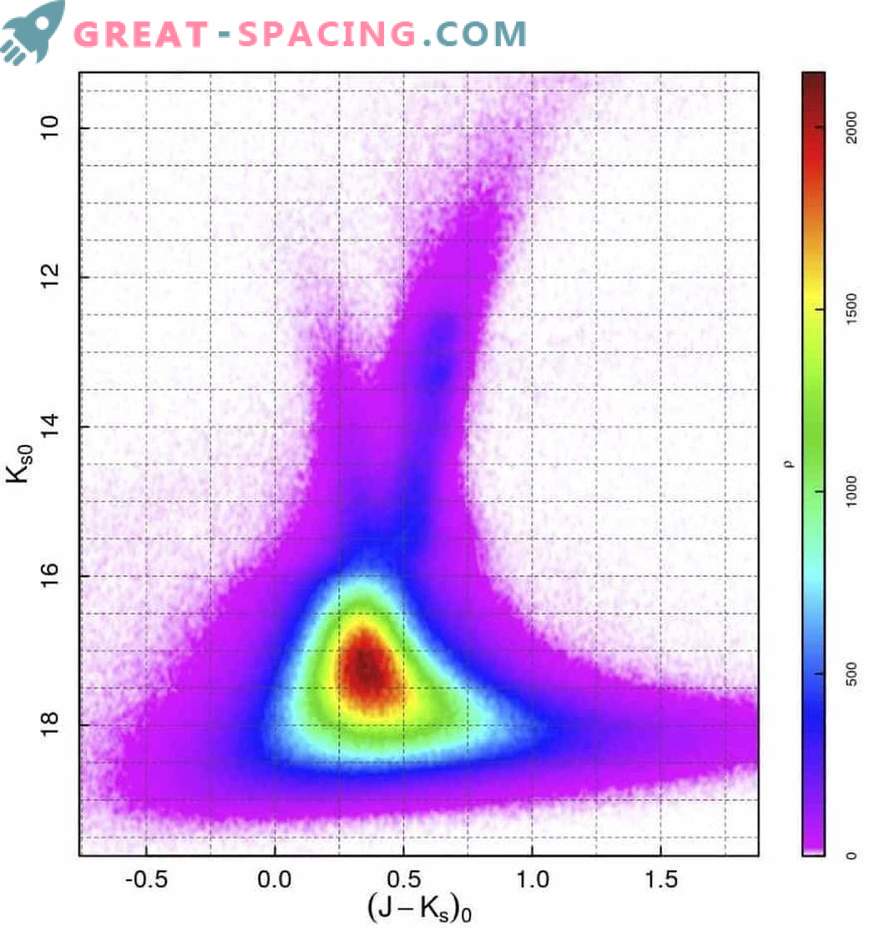
One of the three sites showed a superposition of almost 3 million stars belonging to different structures of the Milky Way along the line of observation.
The color and brightness were studied in order to find those stars that had just reached the level of depletion of hydrogen-burning fuel in the core, which is a sensitive age indicator. The results do not agree with the old Milky Way and a star formation is needed, starting about 11 billion years and lasting 4 billion years. The youngest observed stars reach 7 billion years, which is higher than some previous analyzes.
The bottom line is that early research stated that metal-rich stars in a bar should be the youngest. But analysis shows that this bar appeared 7 billion years ago and since that time there has not been a large amount of gas to create stars.
As a result, the researchers plan to create a map of the history of the star formation of the entire convexity of the Milky Way. The final result will display the birth rate of stars as a function of age and the metallicity of the stars above the bulge.


